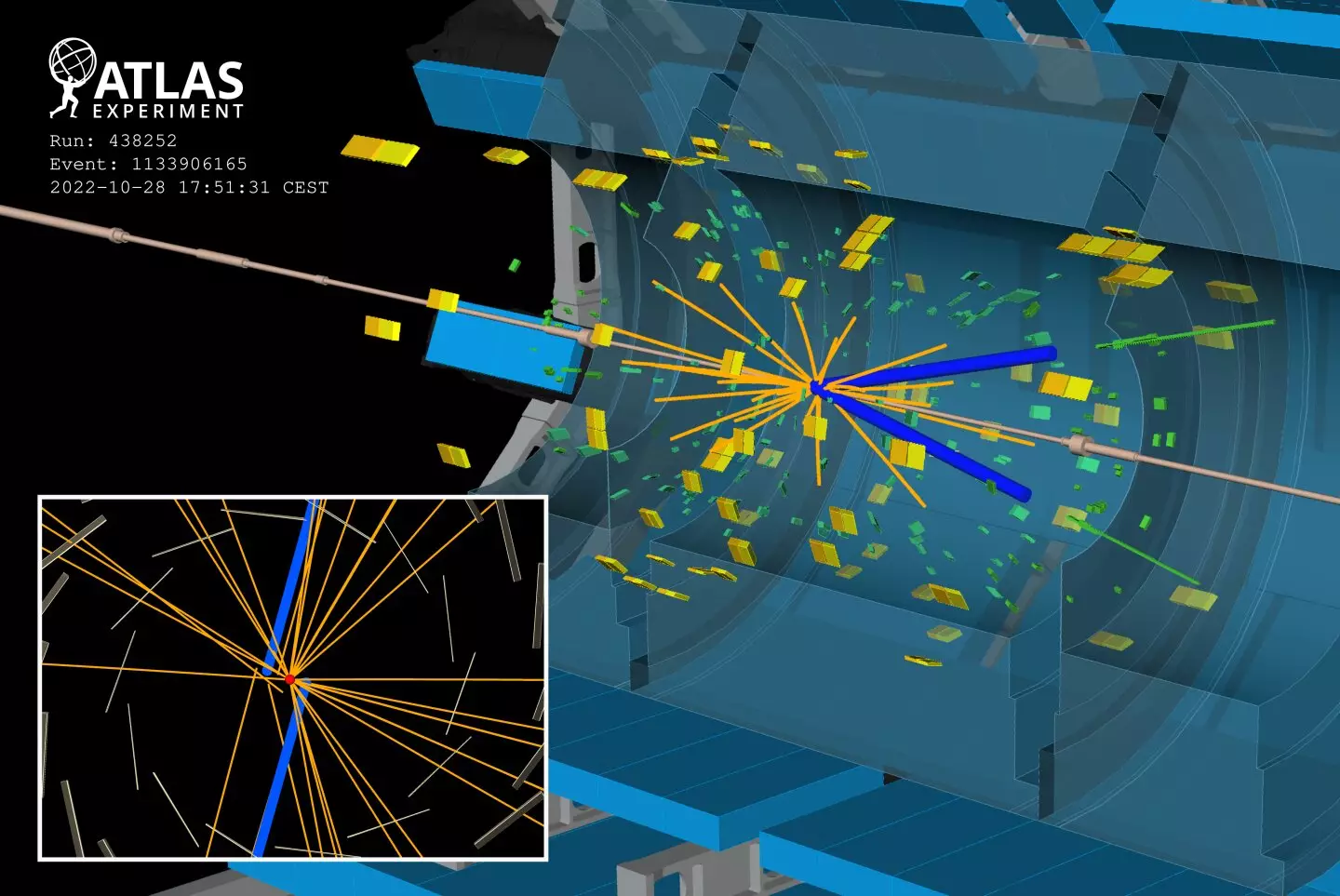The Standard Model of particle physics has been a cornerstone of modern scientific understanding, effectively outlining the fundamental constituents of matter and the forces that govern their interactions. However, this robust framework has glaring limitations. It leaves significant questions unanswered and overlooks numerous phenomena that point toward a more intricate tapestry of the universe. This incompleteness has spurred researchers worldwide to hunt for new physics phenomena, driving innovation and experimentation in laboratories and observatories around the globe.
At the forefront of this quest is the ATLAS collaboration, armed with cutting-edge technology at the Large Hadron Collider (LHC). The recent biannual International Conference on High Energy Physics (ICHEP) held in Prague underscored this initiative, showcasing ATLAS’s latest research focused on hunting for elusive entities like magnetic monopoles and long-lived particles. Such discoveries could have profound implications, possibly reshaping our understanding of fundamental forces and the unification of physical laws.
Magnetic Monopoles: The Holy Grail of Magnetism?
Among the theoretical entities sought by physicists is the magnetic monopole, a hypothetical particle that would materially embody the symmetry between electricity and magnetism. Unlike conventional magnets, which possess both north and south poles, magnetic monopoles would exist as isolated entities, potentially validating grand unified theories that attempt to reconcile the strong, weak, and electromagnetic forces. The LHC’s high-energy collisions create the perfect environment for these exotic particles’ production, making it a hotbed for experimental searches.
ATLAS’s recent pursuit specifically zeroed in on heavy-ion collisions, analyzing data from lead-lead interactions collected during the third run of the LHC. Within these collisions, the enormous magnetic fields generated—reaching strengths as high as (10^{16}) Tesla—create conditions ripe for the production of monopole pairs. In theory, if detected, these particles would leave a distinct ionization signature within the detector, representing pure evidence of their existence. However, after combing through this unprecedented dataset, ATLAS found no corroborating signs, setting stringent limits on the possible creation rate of magnetic monopoles with masses below 120 GeV.
This outcome serves not only as a setback in the specific search for monopoles but also exemplifies the rigorous thresholds of detection that experimental physics must uphold.
Unveiling Long-Lived Particles
In parallel with the search for monopoles, ATLAS has also directed its attention toward another enigmatic phenomenon: long-lived particles predicted by theories beyond the Standard Model, including concepts rooted in supersymmetry. Unlike conventional particles that decay rapidly, these elusive entities could manifest decay products well away from the initial collision point. This presents a unique challenge; such particles require specialized tactics for reconstruction and tracking.
The ATLAS collaboration’s latest analysis has introduced a pioneering search for pairs of long-lived particles that decay into familiar subatomic constituents like electrons, muons, or tau leptons. The pairing of these decay products generates distinctive tracks, commonly referred to as “displaced tracks.” This particular search made use of the upgraded event detection system implemented for LHC Run 3, allowing researchers to capture rare signatures hinting at the presence of these long-lived particles.
Despite the promise of groundbreaking discoveries, the analysis of the data yielded results consistent with predictions from the Standard Model. Nevertheless, these findings established the most stringent constraints on the masses of long-lived supersymmetric partners to date, emphasizing the ongoing need for sophisticated detection methods.
The Future of High-Energy Physics
As the LHC continues to evolve towards its High-Luminosity upgrade, the ATLAS collaboration remains resolute in its commitment to expanding the frontiers of particle physics. The complexities of searching for magnetic monopoles and long-lived particles underscore the intricacies involved in unveiling the universe’s deepest secrets. The methods refined in these recent analyses could serve as a cornerstone for future research endeavors, paving the way for more successful detections.
The scientific community stands at a critical juncture, where every experiment could unearth new insights that alter established paradigms. While current results may not have confirmed the existence of magnetic monopoles or long-lived particles, they lay the groundwork for a broader understanding of the universe’s mechanics. With each particle collision at the LHC, physicists inch closer to answering profound questions that have fascinated humanity for generations, affirming the belief that the pursuit of knowledge—however challenging—remains one of the most rewarding ventures one can undertake.

